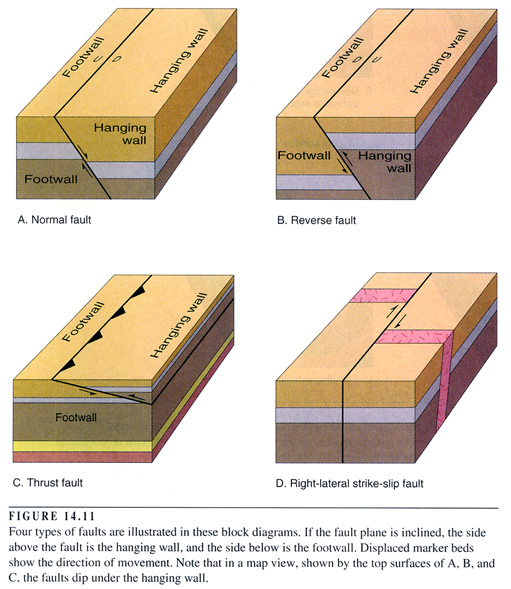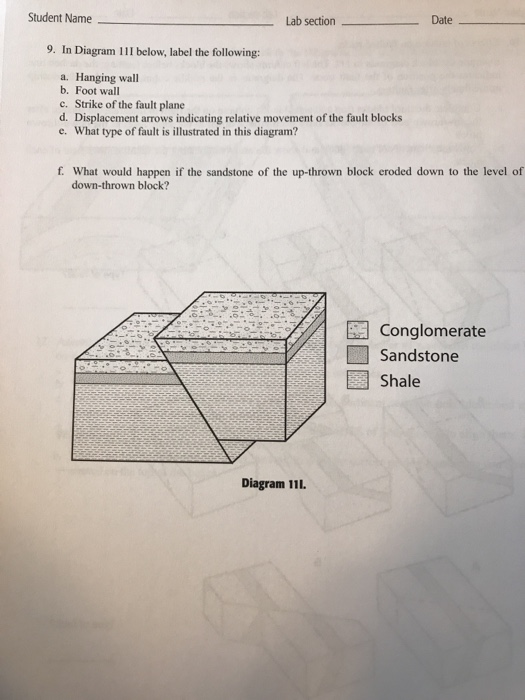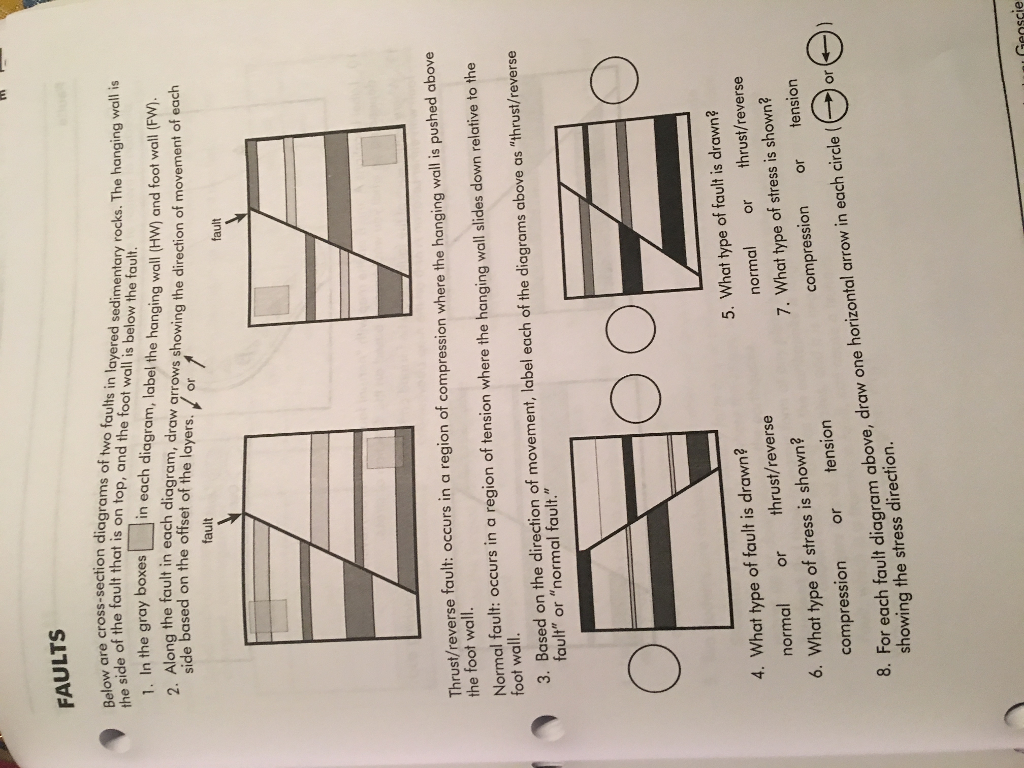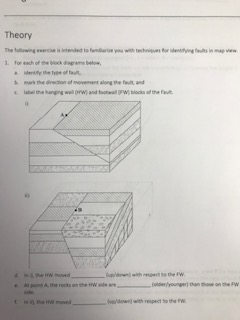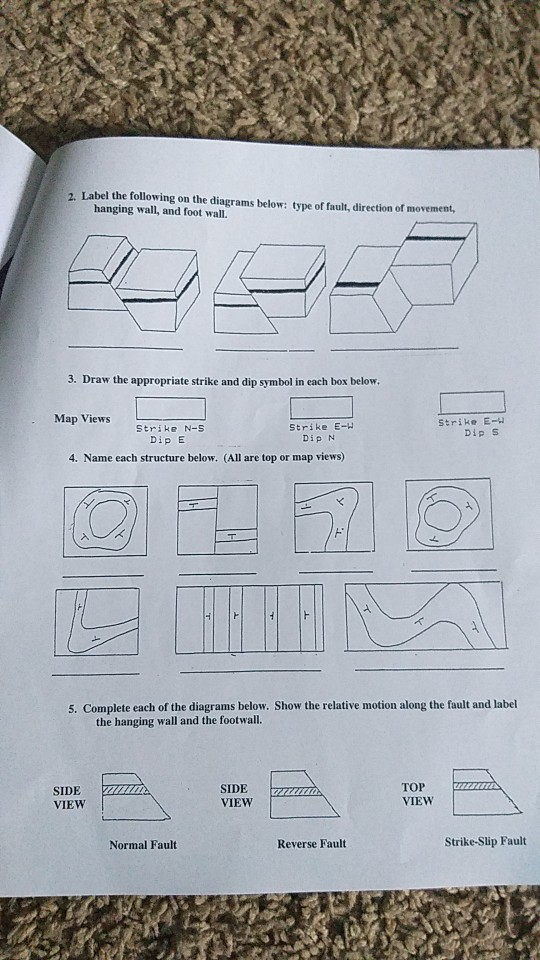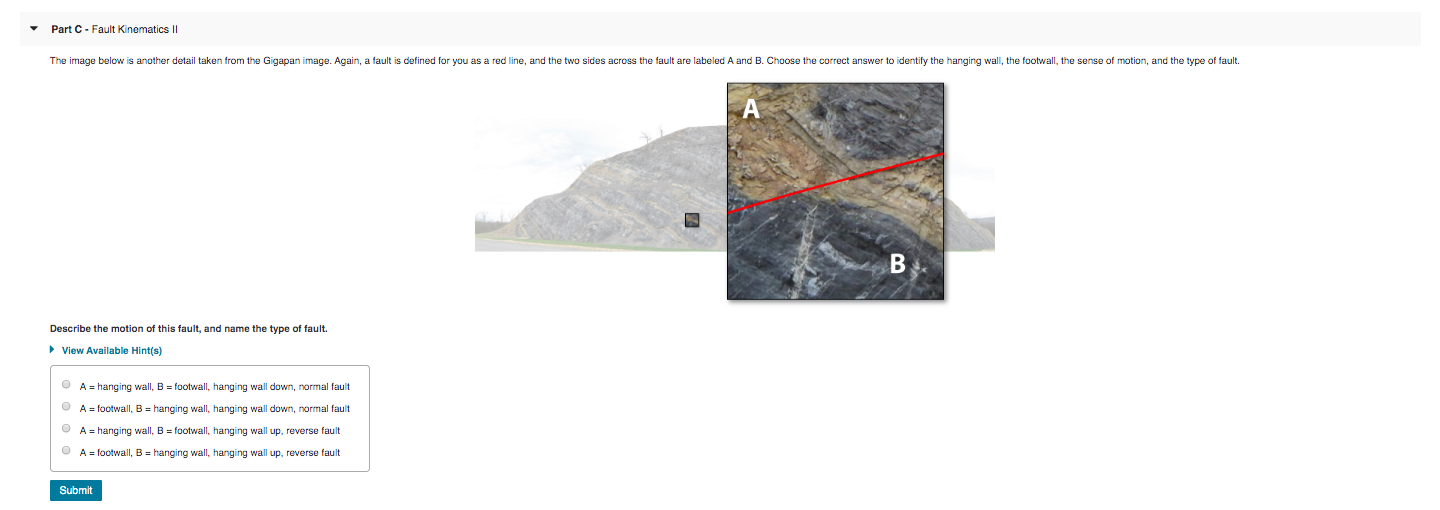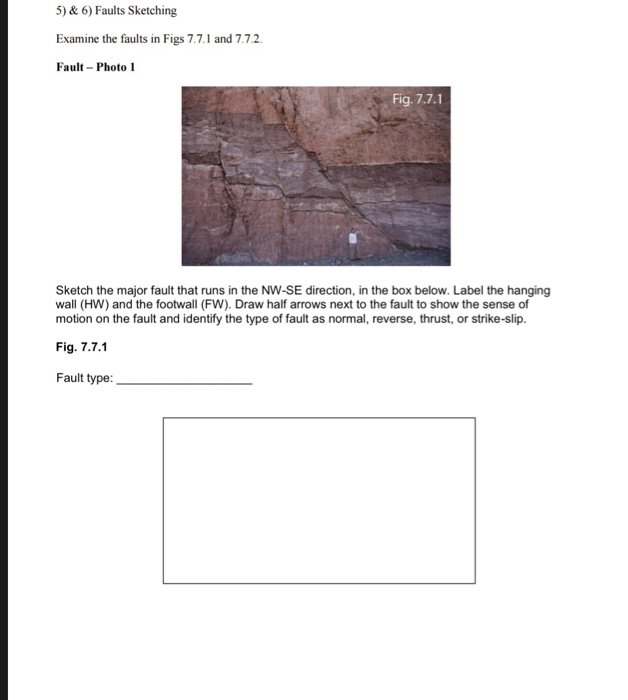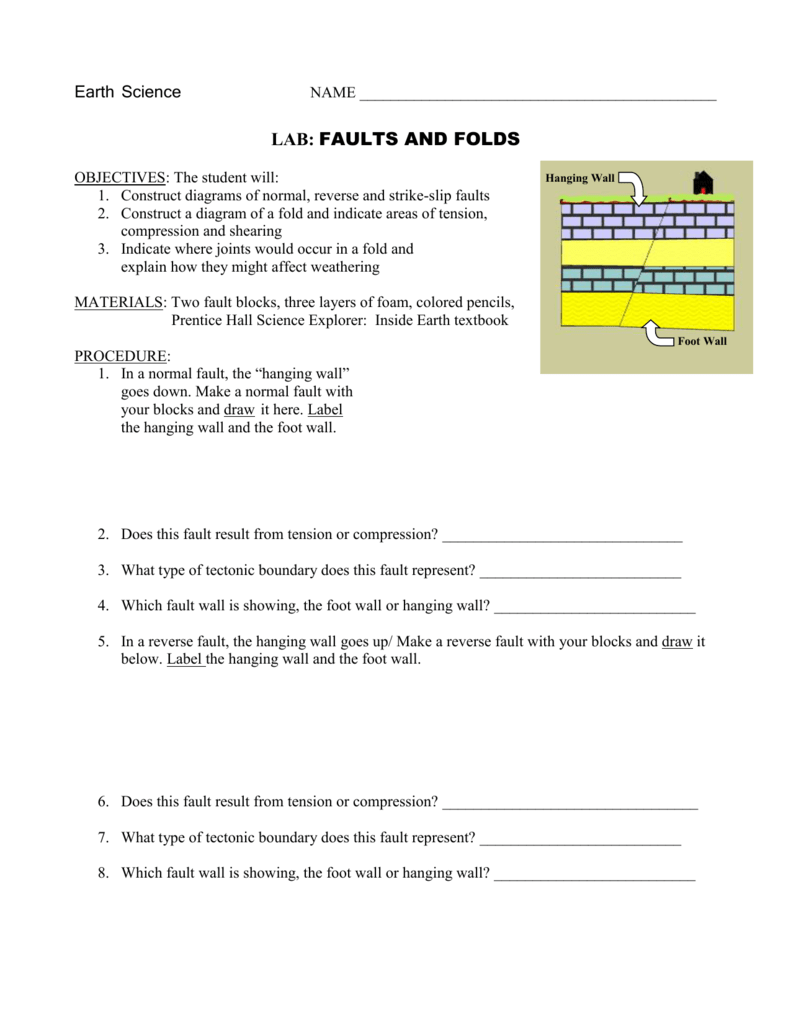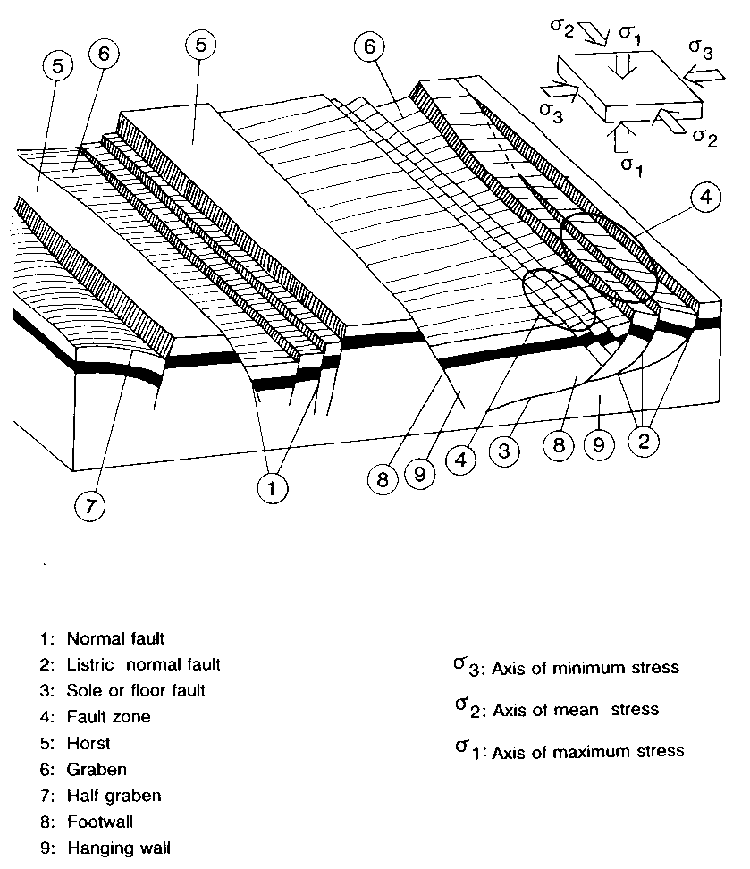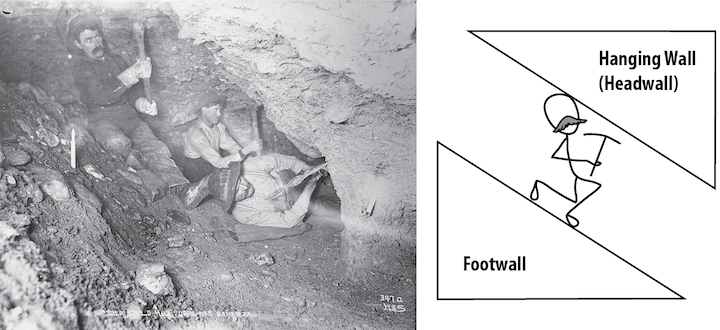When working a tabular ore body the miner stood with the footwall under his feet and with the hanging wall above him.
In a fault the hanging wall is below the footwall.
What are rocks below and above a fault called.
Any fault plane can be completely described with two measurements.
When the fault plane is vertical there is no hanging wall or footwall.
This terminology comes from mining.
In a non vertical fault where the fault plane dips the footwall is the section of the fault that lies under the fault while the hanging wall lies over the fault.
Its strike and its dip.
The hanging wall moves downward relative to the footwall.
The names come about from the.
Thrust fault another type of fault is the thrust fault where ground on one side of the fault moves up and over adjacent ground.
The block below is called the footwall.
The two sides of a non vertical fault are known as the hanging wall and footwall.
A the lower wall below and the upper wall above b the hanging wall below and the footwall above c the footwall below and the hanging wall above d the footwall below and the upper wall above e the lower wall below and the hanging wall above.
The fault strike is the direction of the line of intersection between the fault plane and earth s surface.
Hanging wall and footwall.
In fault fault plane is called the hanging wall or headwall.
In a non vertical fault where the fault plane dips the footwall is the section of the fault that lies under the fault while the hanging wall lies over the fault the names come about from the.



